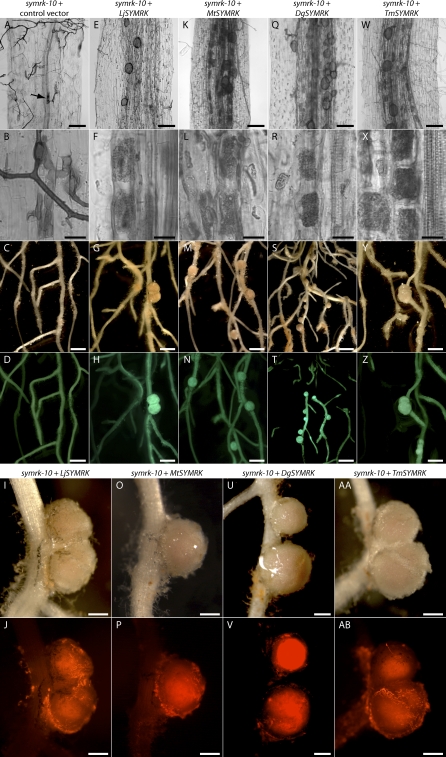Figure 3. Datisca, Medicago, and Tropaeolum SYMRK Restore Fungal and Bacterial Endosymbioses in Lotus symrk-10 Mutants.
Transgenic roots were identified via fluorescence of eGFP encoded on the transfer-DNA.
(A–D) L. japonicus (Lotus) symrk-10 roots transformed with the respective control vector lacking a SYMRK expression cassette.
(E–AB) Lotus symrk-10 roots transformed with Lotus (E–J), Me. truncatula (Medicago) (K–P), D. glomerata (Datisca) (Q–V) and T. majus (Tropaeolum) (W–AB) SYMRK under control of the LjSYMRK promoter region.
(A, B, E, F, K, L, Q, R, W, and X) Roots co-cultivated with G. intraradices for 3 wk. (A and B) Transgenic control roots devoid of intraradical hyphae or arbuscules, with aborted fungal infection structures within epidermal cells (B and arrow in A). Roots carrying Lotus (E and F), Medicago (K and L), Datisca (Q and R), and Tropaeolum (W and X) SYMRK with dense fungal colonization of the inner root cortex (E, K, Q, and W) and arbuscule formation in inner cortical cells (F, L, R, and X).
(C, D, G–J, M–P, S–V, and Y–AB) Root systems inoculated with M. loti expressing DsRED for 4 wk. (C and D) Transgenic control roots showing no nodules. symrk-10 root systems transformed with Lotus (G–J), Medicago (M–P), Datisca (S–V), and Tropaeolum (W–AB) SYMRK develop nodules on transgenic roots. Nodules exhibit pink coloration in white light, indicating the presence of symbiosis-specific leghemoglobins (I, O, U, and AA) and DsRED fluorescence in inner nodule tissue indicating the presence of M. loti (J, P, V, and AB).
Scale bars: (A, E, K, Q, and W) 0.1 mm; (B, F, L, R, and X) 0.02 mm; (C, D, G, H, M, N, S, T, Y, and Z) 2 mm; (I, J, O, P, U, V, AA, and AB) 0.5 mm.

